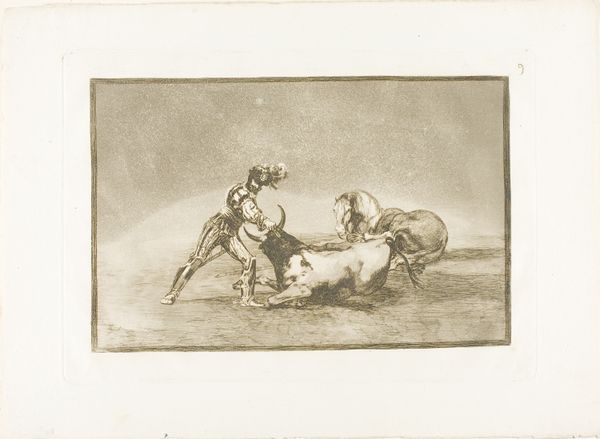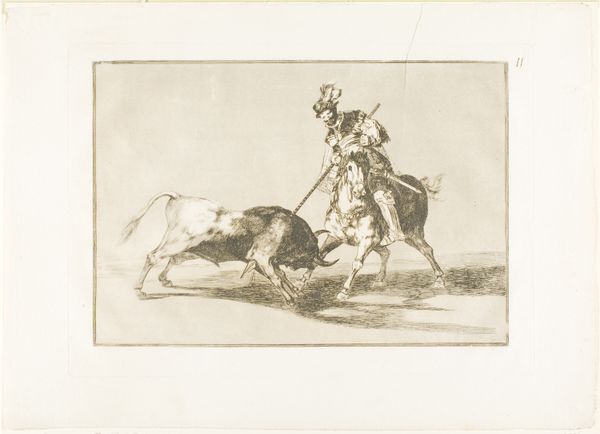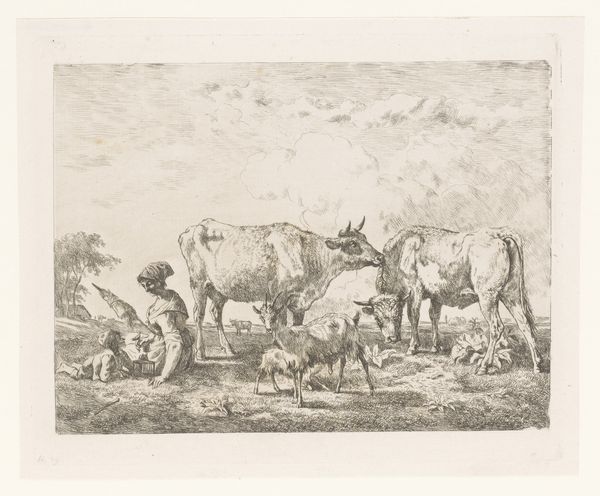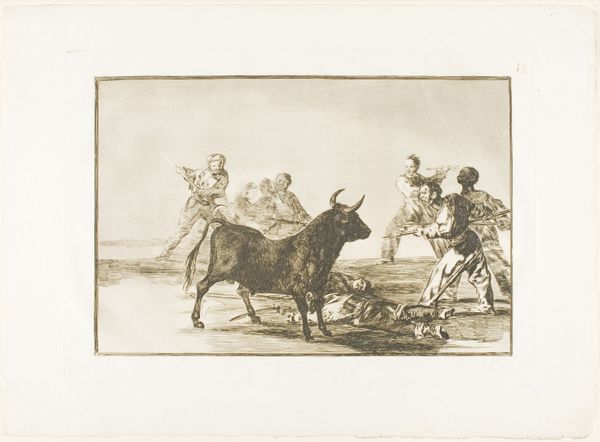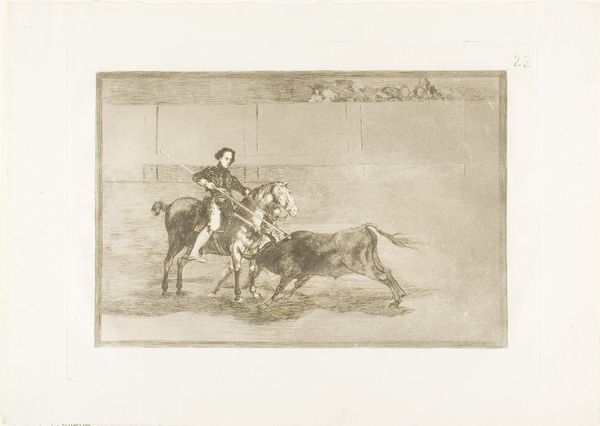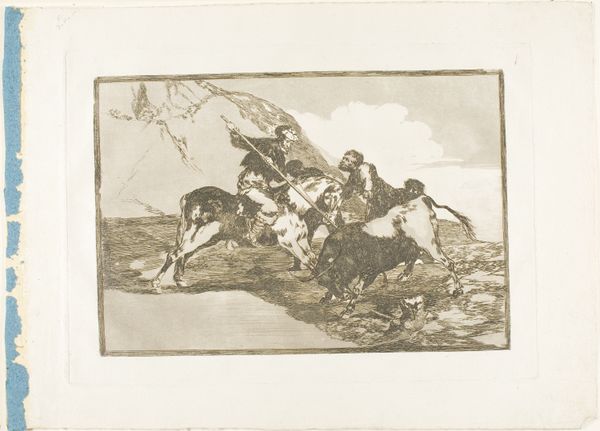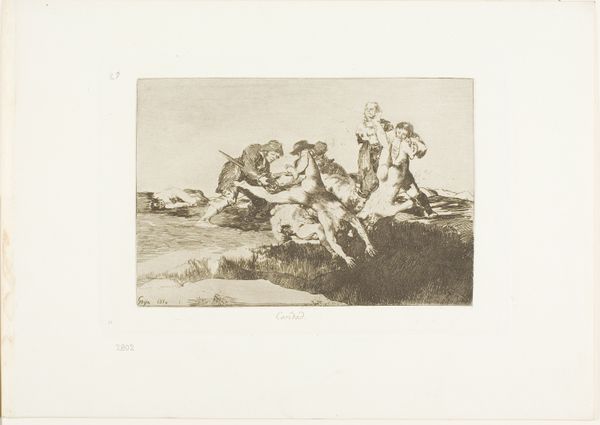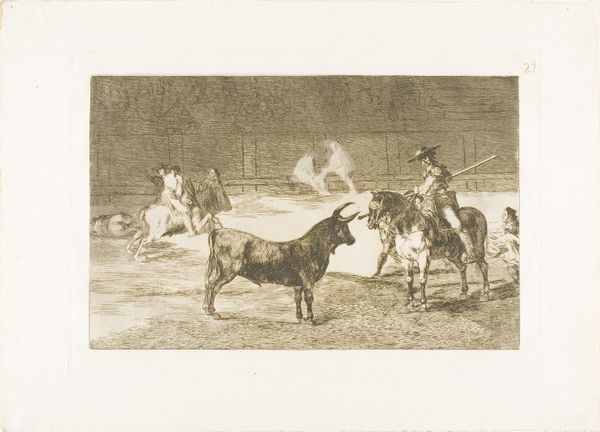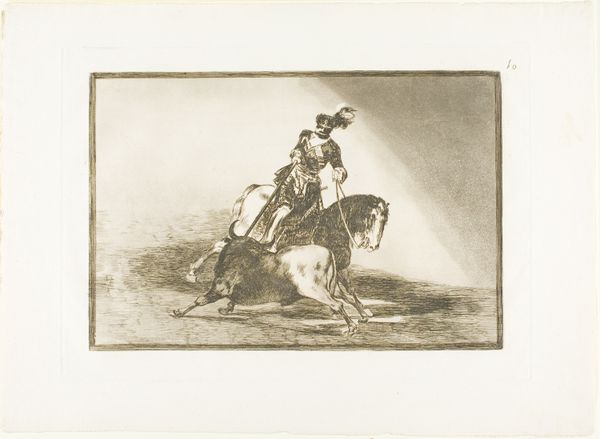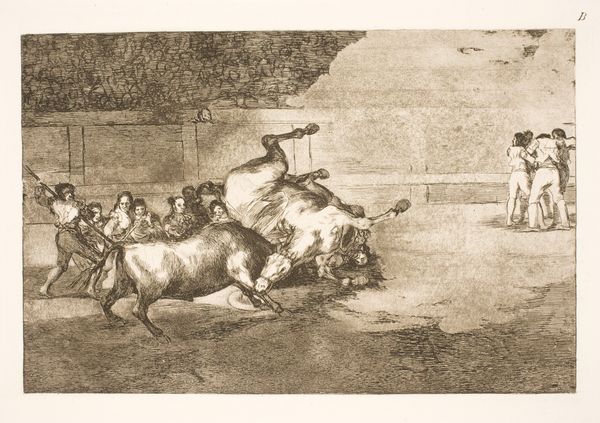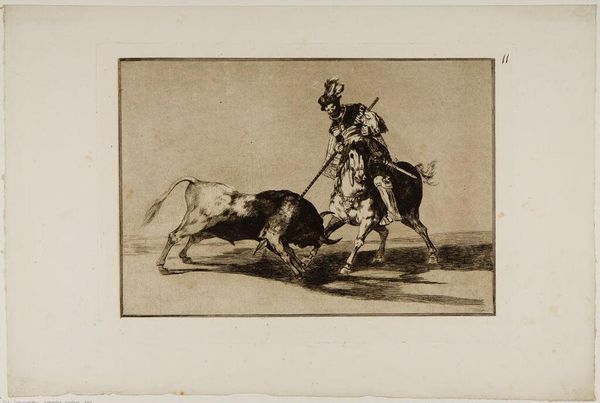
The Moors use donkeys as a barrier to defend themselves against the bull whose horns have been tipped with balls, plate 17 from The Art of Bullfighting Possibly 1814 - 1816
0:00
0:00
Dimensions: 199 × 311 mm (image); 245 × 352 mm (plate); 318 × 447 mm (sheet)
Copyright: Public Domain
Curator: Oh, goodness, what a commotion! A toppled donkey and men brandishing sticks—it's utter chaos! Editor: Indeed. Here we have Francisco de Goya's etching, "The Moors use donkeys as a barrier to defend themselves against the bull whose horns have been tipped with balls," likely created between 1814 and 1816. It’s plate 17 from his series on bullfighting, currently held at The Art Institute of Chicago. Curator: Balls on the bull's horns, you say? How wonderfully absurd. But it gives the entire spectacle a slightly clownish feeling, no? I get the feeling of being both thrilling and ridiculous. I can almost hear the shouting and the donkeys braying! Editor: The scene’s absurdity highlights a very real cultural conflict, especially through the choice of using donkeys as barriers. Donkeys have historically symbolized humility, service, or even stubbornness. Here, they become instruments of defense, revealing the Moors’ ingenuity but also perhaps their vulnerability against a more powerful symbol—the bull. Curator: It feels less like triumph and more like desperate measures—donkeys scrambling, men scrambling, it's a dance of near misses. Those spears look so fragile against the bull. You can almost smell the fear and the dust in this artwork! The whole print is filled with that anxious tension, which speaks volumes of the cultural context Goya portrays. Editor: Exactly, it hints at deeper tensions. Bulls traditionally symbolize virility, strength, even Spain itself. Goya challenges this valorous depiction by illustrating unorthodox defenses, laden with implications. I find it striking that while titled ‘The Art of Bullfighting’, Goya highlights this sort of defense that's considered outside the art's 'purity.' Curator: He loves undercutting expectation. It’s so easy to reduce it to a clash of cultures, bull versus Moor. But those balls, those ridiculous balls, change everything. It’s a wink, a wry acknowledgement that perhaps neither side knows exactly what they're doing. What if Goya implies that no defense against cultural chaos, bull or human, will ever really be adequate? Editor: Absolutely. Goya masterfully captures cultural nuance through surprising choices like donkeys as defenses and softening the aggression. Through imagery he opens historical context for new reflection on both culture and human nature. Curator: A lot like trying to keep my garden tidy against rogue weeds and squirrels, then. Impossible! It feels wonderfully alive—disorganized, tense, and ultimately unresolved. Goya makes bullfighting sound like existentialism, but in an artful, fun way.
Comments
No comments
Be the first to comment and join the conversation on the ultimate creative platform.

